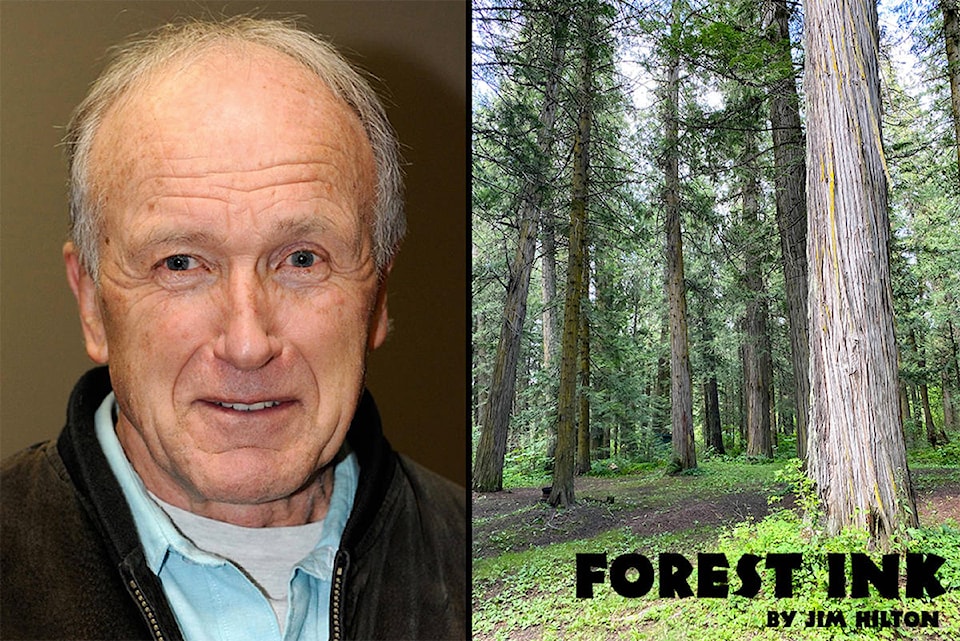With the ongoing battles over the cutting of ancient forests and the increasing threat to commercial forests and protected areas because of climate change, it may be time to look at some alternatives to our existing approach to habitat management.
A couple of recent scientific papers may provide some different approaches. The first paper was published in “Frontiers. Forests and Global Change.”
The scientists found that “only 2.8 per cent of the terrestrial surface of the planet is represented in areas of 10,000 km2 or larger with low human footprint, no known species loss and no species known to be reduced below functional densities. This compares with estimates of 20–40 per cent from mapped habitat intactness in the literature. The conclusion is that conservation efforts should target the few remaining areas of the world that represent outstanding examples of ecological integrity and aim to restore ecological integrity to a much broader area of the world with intact habitat and minimal species loss while this is still possible.”
The second paper takes a slightly different approach by looking at some of the positive impacts of humans over the past 12,000 years.
This paper published in the Proceedings for the National Academy of Science by lead author Erle C. Ellis,describes how humans have been shaping the global landscape for thousands of years and that until just a few hundred years ago, most of it was done in a sustainable manner.
Human societies did shape their landscapes. They hunted, used fire, they moved species around the landscape and basically managed ecosystems in various ways.
“More specifically the following practices were used: residential mobility, long- and short-fallow cultivation, polycropping, and tree-fallowing that created diverse, dynamic, and productive mosaics of lands and novel ecological communities in varying states of ecological succession and cultural modification.”
This type of agriculture is contrasted to recent more homogeneous and continuously used landscapes of larger-scale agricultural societies employing annual tillage, irrigation, continuous grazing, and the extractive and colonial use of land, labour, and other resources to support elite segments of today’s societies.
The emergence and spread of increasingly globalized and industrial societies only accelerated this trend toward today’s ever more intensively used and homogeneous cultural landscapes shaped by global supply chains, mechanization, chemical nutrients and pest control, leading to ecologically simplified habitats and biotic homogenization through species transported around the world intentionally and unintentionally.
READ MORE: Creating ethanol from residual wood fibre
My take away from these two studies is the following: there are few remaining areas that may have had little impact from humans we should make an attempt to protect without any human modification. There are many more areas that have been impacted in a negative way (i.e. loss of biological diversity) that could be restored making them more productive and sustainable in the long term by reintroducing the attributes that have been lost.
Another option that would in my opinion have the greatest impact is rather than having commercial forest areas and protected areas side by side there may be the possibility of introducing some sort of buffer strips between the two or having small patches of modified harvest among the protected areas.
On the edge of protected areas there could be some selective harvest of dead or damaged trees with the use of small forwarder machines. The existing protection of large old trees within the commercial forest is an example of some attempts to integrate the two systems. In the short-term the suggested modifications would probably mean a reduction in the commercial cut but would provide more opportunities for future generations to work in the forest industry. Future articles will look at ancient forest gardens in the pacific northwest.
Jim Hilton is a professional agrologist and forester who has lived and worked in the Cariboo Chilcotin for the past 40 years. Now retired, Hilton still volunteers his skills with local community forests organizations.
editor@wltribune.com
Like us on Facebook and follow us on Twitter
